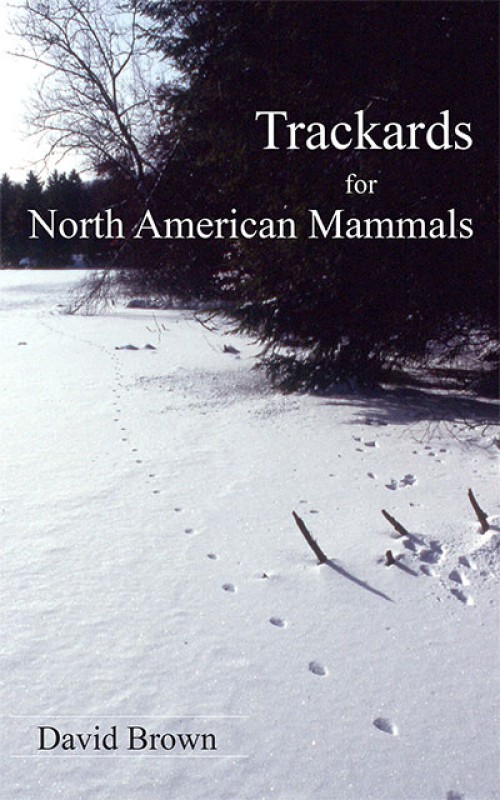by David Brown
The McDonald & Woodward Publishing Company, 2013
When I was a girl, my grandmother gave me a guide to the wild animals of the Rocky Mountains. It was a small book, bound in green cloth, with a page or two for each animal. The drawings – one of the animal and one of a track – seemed completely unrelated to anything I could find in nature, and I soon gave it up.
It seems David Brown had a similar experience, and he wrote Trackards for North American Mammals and their companion guide to spare others the same frustration. In the introduction he notes that “a tracking guide, reduced by a concise format to minimal information, simply won’t be useful in the field.” What he offers in exchange is a set of waterproof field cards and a companion guide that “attempts to present tracks and tracking in something closer to their true complexity.” And let me tell you, Brown isn’t messing around.
His guide covers 26 common mammals in startling detail. Take, for example, an animal that continues to flummox me – the red fox. The trackard (or track card) provides life-sized illustrations of tracks in mud, damp snow, and hard dirt. After all, “An animal’s tracks are subject to all sorts of distortions so that a single representation of a track or trail is likely to be a misrepresentation.” The card also has a life-sized drawing of typical scat, walking and trotting trails (to scale), and a ruler with typical measurements marked for easy comparison in the field. And that’s just the beginning.
Open the companion guide and you’ll find more than 10 pages of detailed information for this one animal. For starters, we learn that the track in mud was actually “muddy sand at Brownfield, Maine, in May.” And there is another page full of tracks – of a young fox, a galloping adult with nail marks, and the tracks of gray fox, domestic dog, bobcat, and coyote for comparison.
And yet, it’s when you start reading that you get the juicy information. He describes the fox’s tracks, trails, scat, scent marking, habitat, and den in detail. We learn that the prints are symmetrical (“If you come upon the trail of a canid and are not sure at first which way it is going, chances are you’re looking at a red fox’s trail”); why red foxes are known for a trail “as narrow and regular as sewing machine stitches” (a direct register is “much more efficient in snow or other deep footing”); that they use dens only for raising pups (“red foxes are so overbuilt for cold that they rarely rely on dens for protection in winter”); and that they seem to eat fibrous material to cleanse their digestive systems (“apparently anything that produces the desired effect will do”).
The best part of each entry, though, is the comparison to similar animals. Every tidbit of information is placed in contrast to another species. So when you find that pile of scat that you’re pretty sure is red fox, you’ve got descriptions of similar animals’ leavings on the same page to help you narrow the possibilities and solve the mystery. Reading this book is like having a good friend, wiser than yourself, close at hand, saying, “Yes, it’s a fox. Let’s look and see what it ate for dinner.”


